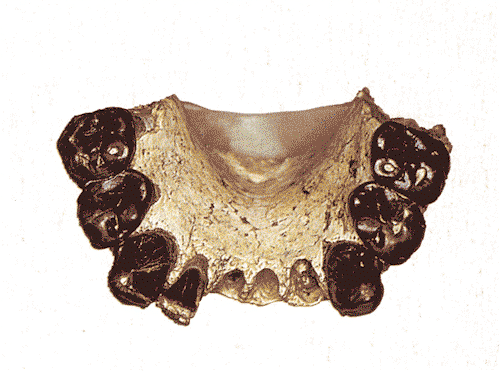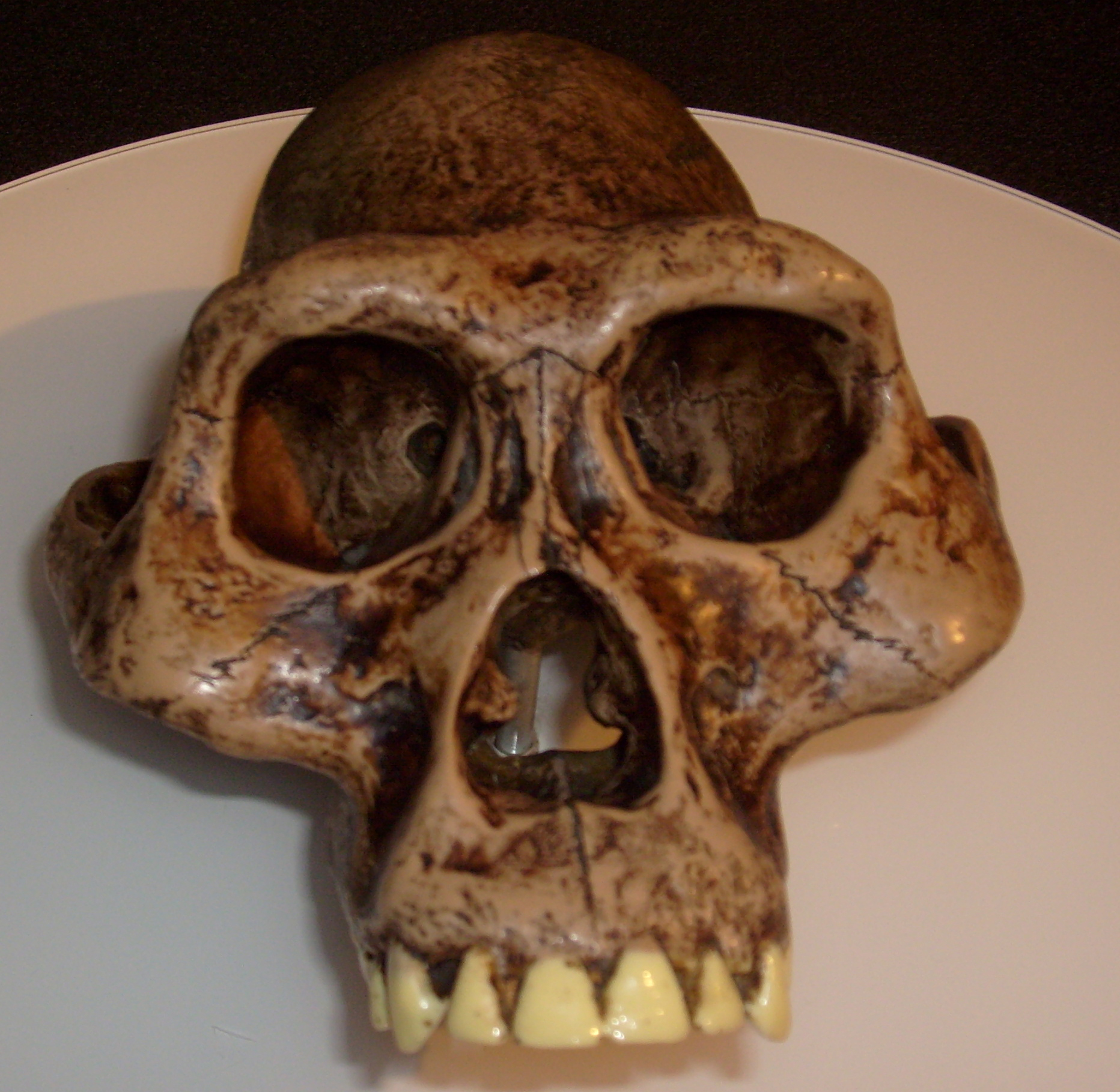Australopithecus bahrelghazali
- Chad
Australopithecus bahrelghazali is a species of the extinct genus Australopithecus. Fossils, Australopithecus bahrelghazali were assigned to originate from a maximum of 3.5 million year old layer of the reference KT 12 in northern Chad.
The classification of the finds as a distinct species is controversial. Their importance lies primarily in the detection of a much larger distribution area of the australopithecines than previously thought: the Afar Triangle in Ethiopia over the Rift Valley of time until about 2500 kilometers to the west.
Naming
The name of the genus Australopithecus is derived from the Latin australis ( " southern " ) and Greek πίθηκος, AltGr. pronounced píthēkos ( "Monkey "). The epithet refers to the bahrelghazali locality in the river bed of the Bahr al Ghazal (Arabic: Flow of gazelles ). Australopithecus bahrelghazali therefore means " southern ape from the Gazelle river ".
The finds
The first found object - a partially preserved lower jaw - was at Koro Toro ( KT reference 12; geodata: 15 ° 58'10 N, 18 ° 52'46 O) discovered in 1995 and 1996 reported as holotype of Australopithecus bahrelghazali (archive number KT 12/H1 ). Furthermore, it was discovered only an isolated tooth. Excavation director Michel Brunet of the mission Paléoanthropologique Franco - Tchadienne gave the mandible nicknamed " Abel ", in memory of his deceased during excavation work on the effects of malaria colleagues and geologists Abel Brillanceau of the University of Poitiers in Cameroon.
The discoverer of the fossils argued that the teeth of Australopithecus bahrelghazali have a thicker enamel layer as Ardipithecus ramidus, making him different from this, while the bones of the lower jaw and the tooth roots of the obtained premolars differ from the conditions in Australopithecus afarensis. Notes on body size, brain volume, or specific behaviors due to the very modest Fund position but do not exist; many researchers interpret the finds from Chad therefore as a local variant of Australopithecus afarensis.
From the same find the layer from which originate the fossils of Australopithecus bahrelghazali, fossils of various other animal and plant species have been recovered. The researchers determined, among other fossil bones of terrestrial species from the group of pigs, elephants and Stegodonten, giraffes, antelopes ( Parmularius ), springbok, bovine Giraffes ( Sivatherium ), white rhinos, horses ( Hipparion ), cattle and waterbuck. Furthermore, they found the remains of water- living species from the group of Barschartigen and the catfish -like, the soft-shelled turtles, crocodiles ( Tomistoma ), ducks, hippos ( Hexaprotodon ) and otters. From the relatively large proportion of cattle and the Springboks at the fossils, it was concluded that the habitat of Australopithecus bahrelghazali - similar to the other Australopithecus species - from water areas, forested areas and tree-covered grasslands ( savannas ) consisted; This interpretation was supported by the absence of forest blocks and primates other genera Australopithecus. At the same time, however, occupied the detection of giraffes that at least a certain number must have existed on trees.
Based on the ratio of 12C atoms to 13C atoms in the enamel was deduced that Australopithecus bahrelghazali particularly fed on C4 plants, that is, mainly of grasses. However, Australopithecus has bahrelghazali - in contrast to the much younger Paranthropus boisei kind - no special adaptation of his teeth on relatively hard grasses. Therefore, it was argued that the dietary intake of Australopithecus bahrelghazali is probably most comparable to today's living Dscheladas, some of which feed on grass and grass seeds, part of roots and tubers.
Dating
According to the first description fossils were first biostratigraphically dated to an age of approximately 3.5 to 3.0 million years ago ( based on index fossils ). Another dating yielded an age of 2008 ± 3.58 0.27 years. Against the dating of the finds has been argued in 2008 that they were not discovered in situ, that therefore a shift by geological or other processes can not be excluded.










